The immediate concern was to get the water out of the bilge. The switch on the electrical panel labeled "bilge pump" was turned on, but nothing was happening. Opening the access panel to the bilge pump, I could see the tip of the float switch in the full, upright, "on" position and nothing was happenning. Reaching into the bilge muck, I found that the ends of the wires leading into the float switch had burned off.* I followed the leads out of the top of the pump itself and attached a 12-volt battery charger to them and nothing was happening.
It was pretty clear that I was going to need a new pump and a new float switch. I still had no idea where the water was coming in from though. There were no obvious leaks and the packing gland for the propeller shaft was tight enough to prevent dripping. I borrowed a 110V portable pump from one of dad's boats, pumped the water out, and still couldn't find anymore water coming in. I wasn't happy about being unable to find the cause, but the symptom still needed to be taken care of. First though, I needed a shower.
When I finished showering and shut off the water I heard a trickling noise from under the deck. When I pulled the access panel for the bilge pump again, I stuck my head in and noticed that the sump for the shower drain was overflowing. Since the bottom of the shower stall is about a foot below the waterline, the shower drains into a plastic box (called a "sump") with another little bilge pump and float switch installed inside to pump water up and over the side. Clearly something in this little system was not working as well. Further investigation revealed that neither the pump nor the float switch were in working condition.
So the bad news was that the shower was draining into the bilge. The good news was that at least I knew where the water in the bilge was coming from.
After a lot of cursing and a few hundred dollars spent at the local West Marine I had two new bilge pumps with built-in float switches and clever little strainer baskets designed to keep them from getting clogged. After a few minutes of poking around with the multi-meter, it was clear that there was no power going to either of these pumps. That meant it was time to get into the electrical system.
This is me not having fun with the boat's electrical system:
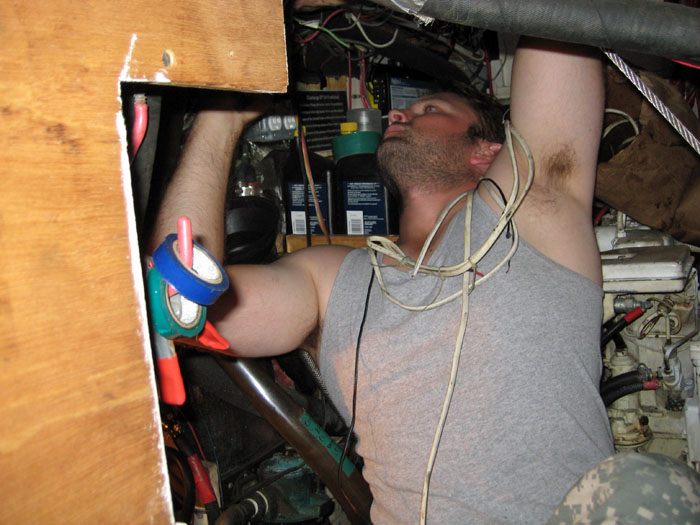
The electrical system has been one of the most dreaded projects I've been looking forward to ever since I bought the boat. Here's a shot of the backside of the control panel:
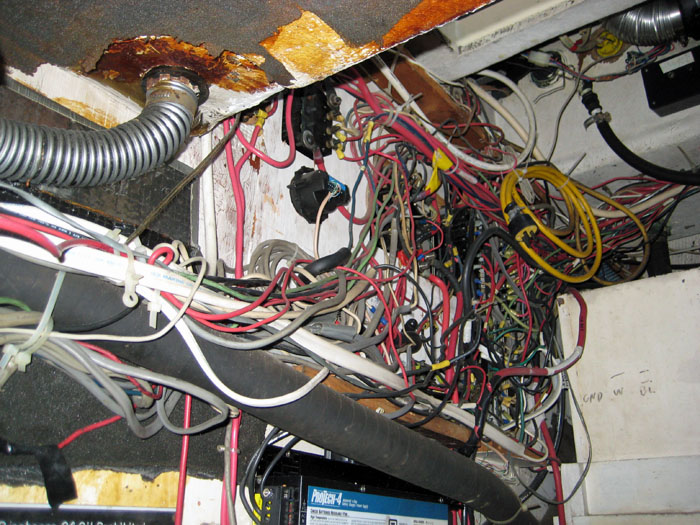
What you're looking at in the above picture is basically 30 years worth of the previous owners of the boat making "improvements" of varying quality. To standardize things on board, all of the positive wires should be red, the negative wires should be black, and the ground wires should be green. There should be no call for blue, purple, white, grey, yellow, orange, or pink wires. Still, I've found them all and more while poking around in the cramped little engine room looking for leads in the great mystery that is my electrical system.
One good thing about the wiring is that much of it is labeled. Unfortunately, not all of the labels are helpful:
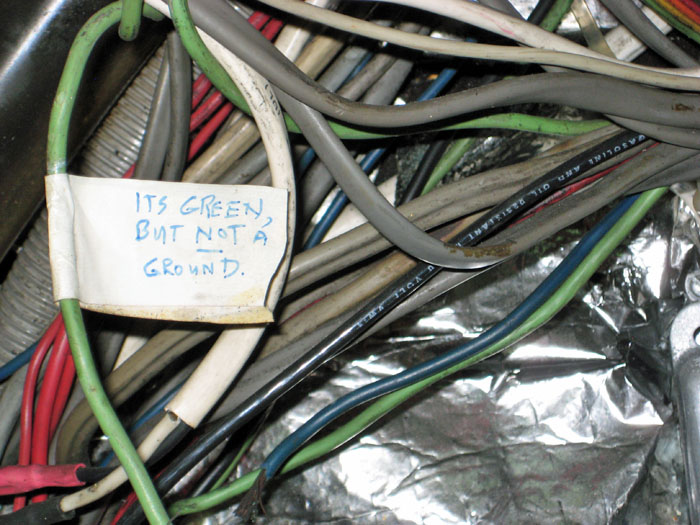
So I invited my friend Matt back over to listen to me curse and throw tools and we pulled out all of the wiring that formerly fed power to the two failed pumps. Then I got to squeeze my way into the access panel and pull out the dead bilge pump and float switch:
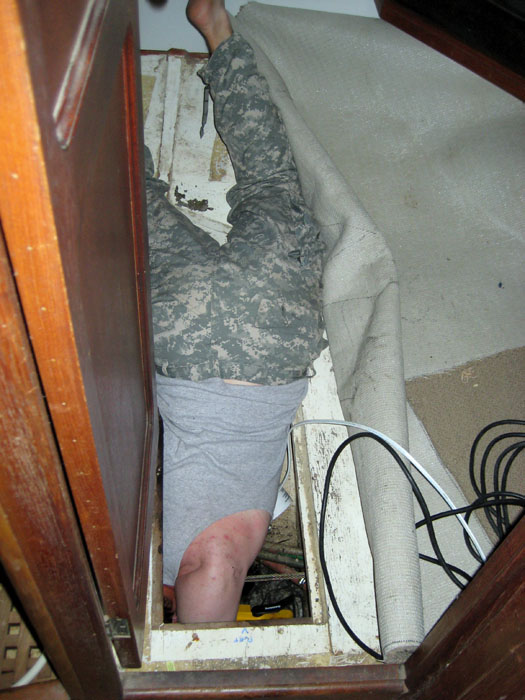
As comfy as that looks, the real twisting and turning was goign on down below:
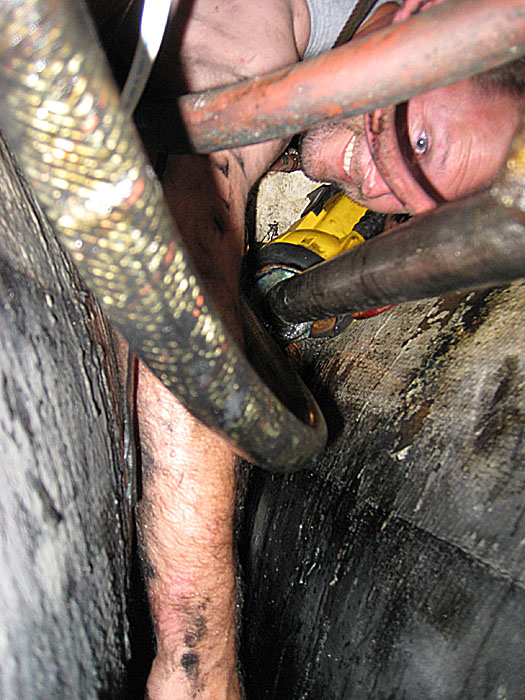
After a few minutes rebuilding the shower sump around the new pump, then a couple of hours of squeezing my way past the steering cables, water hoses, propeller shaft, and more to set the pump in the lowest possible part of the boat, then unraveling the wiring spaghetti in the engine room and connecting the new lead to the switch labelled "bilge pump," something happened. The pump kicked on, the water started shooting over the side and I was finally able to relax, happy to have working sump and bilge pumps again:
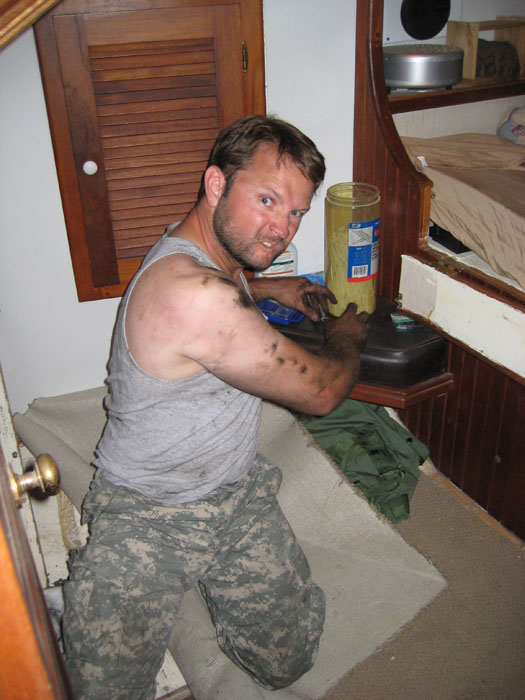
Then all I had to do was toss some fresh oil-absorbent towels into the bilge to save me from causing a minor oil spill and get cleaned up:
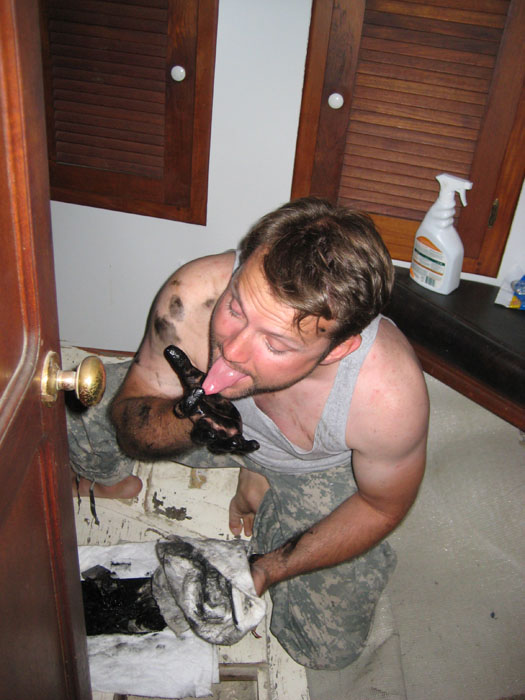
Based on Ana's recommendation (and who better to ask about oil cleanup than the nearest Coast Guard officer?) I used Dawn dish soap to get the ick off. Apparently that's the de-gooper of choice for this sort of job. I figure if it worked for this guy, it'll work for me:

I'm sure I'll notice something else broken soon. I've also got to catch up on writing about my latest costuming project progress, Kite Combat and California Coast Cliff-dwelling Cows, and the ongoing quest for a ship, so stay tuned.
*When the water level reached the wires, it set up a bit of electrolytic action which accelerated the corrosion of the copper conductors, essentially making them rot overnight. Oops. The new connections are secured in place as high as possible out of the bilge.

This comment has been removed by the author.
ReplyDelete